Archives for General Photography category
I was up very early this past Sunday so I could meet the sun at the Gilbert Riparian Preserve and photograph the birds that congregate around the watering holes dotting the preserve. The sun beat me to it, but it was still early enough to take advantage of the great light from the rising sun. One thing you have to accept when shooting wildlife and nature is that it can be hit or miss. This particular day started out more miss for me. Although it was not a morning lost since the preserve is still a beautiful place to just wander around and at 6 am on a Sunday it is still quiet enough to leave you alone with your thoughts.
While I was waiting at the side of a water basin for a duck or goose or heron (or anything really) to come into view I could see another photographer on the other side with a lens that looked more like a telescope. They were obviously well prepared and well equipped for capturing wildlife, birds in particular. My Sony Alpha 850 and 100-300 mm lens looked very amateur in comparison and it got me to thinking, was I wasting my time on birds? Would that photographer with that equipment take a better picture every single time so I should not bother? And if I was wasting time on birds, should I find one particular photographic subject and focus exclusively on it? Wildlife? Landscapes? Portraits? Architecture?
I do not have the answer to these questions and they tend to only lead to more questions for me. Why do I photograph? What is my ultimate photography goal?
At this time I photograph for the love of photography. I have never sold anything nor made a dime off my photography. Someday I would love to photograph for a living – if I could photograph what I love. But for now I am exploring all aspects of photography finding what I like, what I am good at and what may, someday, get me noticed. The more I shoot the more I figure out what I like shooting. And the more I shoot the more I love shooting. So in the end, it does not matter that someone else has found their photographic niche and is probably good enough at it to invest thousands in a very professional lens. What matters is that my photography gets better and my confidence in the images I produce improves.
When I was about it pack it up and head home last Sunday a family of geese, father, mother and five goslings, waded ashore right at my feet. The young geese pecked at the shore for something to eat while the mother kept watch from the water and the father stood on shore keeping an eye on me. The opportunity had come to me and my telephoto lens was not necessary for capturing this moment. So lesson learned; have patience and keep shooting to continuously produce each image better than the one before.
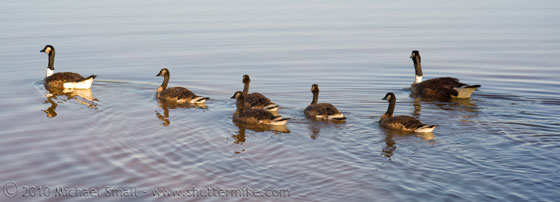
 The mission statement of The Gilbert Visual Arts League is
The mission statement of The Gilbert Visual Arts League is
to create a venue for local artists to show their work and be recognized for their talents. The league strives to increase artistic awareness and appreciation in their community and surrounding areas.
I joined recently to see if I can learn something from fellow artists and possible get some of my photography on display at some smaller local venues. One of the perks of member ship is an artist profile on their site. Check out my artist profile for The Gilbert Visual Art League.
Check out the May special over at artscow.com. Get a free canvas print and free shipping when you buy one canvas print. Upload your images, select the canvas size you want (I believe they have to be two of the same size) and enter the promo code MAYCANVAS at checkout. The promotion ends on May 25, 2010.
If you need a gift for a graduating photography enthusiast or soon to be professional photographer there are a ton of options out there. Here are a few congratulations gifts in a wide range of prices that would make great gifts to any graduate who has a love of photography.
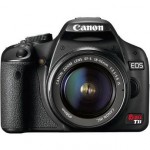 Gifts On the High End
Gifts On the High End
To get the obvious out of the way first, how about a Digital SLR Camera? Prices can vary widely as do the quality and features of each camera. Expect to spend around $500 on the low end all the way up to several thousand dollars for the most feature rich advanced professional cameras. You generally can’t go wrong if you start with the three top brands, Canon, Nikon or Sony and then get the features best suited to your photographer’s level and ambitions. Here are a few good choices:
$500 – $1000 Range
Canon EOS Rebel T1i with 18-55mm f/3.5-5.6 IS Len
Sony Alpha A230 Digital SLR with 18-55mm & 55-200mm Lens
$1000 – $2000 range
Nikon D90 SLR Digital Camera Kit with Nikon 18-105mm VR Lens
Sony Alpha DSLR- A850 Full Frame Digital SLR Camera
$2000 and up
Canon EOS 5D Mark II Digital Camera Kit with Canon 24-105mm f/4L IS USM AF Lens
More Middle of the Road Gifts
If the camera itself is out of your budget, there is no need to worry. The options for photography gifts for graduates are plentiful. So for those more middle of the road gifts here are a few options:
 Adobe Photoshop Lightroom 2
Adobe Photoshop Lightroom 2 – The essential software for digital photographers. Help the aspiring photographer give their images a final polish by giving them this software package.
– The essential software for digital photographers. Help the aspiring photographer give their images a final polish by giving them this software package.
Lenses – The prices of lenses vary significantly but you can almost always find something for at the mid-range budget level. When lens shopping keep a few things in mind: quality can vary as much as price; know the camera brand you are buying for, there aren’t too many “universal” lenses (if any); if you are in doubt go with the old standby photography gift card.
On Camera Flashes – Even though many DSLRs have built in flashes, a on-camera flash attachment can make a big difference in lighting a subject. A decent flash unit can be had for reasonable prices. Be sure check the compatibility of the flash to the camera you are buying it for to make sure the two will work together.
On a Budget
Don’t let money stand in the way of getting your photography enthusiast graduate something they can use as they pursue their photography. Here are several options that will not cost you much at all.
Magic Lantern Guides – These in depth guides are like a camera manual on steroids. They go in depth on every aspect of almost all the major digital SLR cameras. Even if your photographer has had their camera for a while a Magic Lantern Guide can be a valuable resource. And for under $20 you can’t go wrong.
– These in depth guides are like a camera manual on steroids. They go in depth on every aspect of almost all the major digital SLR cameras. Even if your photographer has had their camera for a while a Magic Lantern Guide can be a valuable resource. And for under $20 you can’t go wrong.
 Batteries – A spare battery is a critical accessory for any photographer. There is not too much worse than to be out shooting and have your battery die with no fully charge spare in your camera bag. Find out the make and model of the camera your graduate is using and pick up a spare battery to make sure they never miss a shot.
Batteries – A spare battery is a critical accessory for any photographer. There is not too much worse than to be out shooting and have your battery die with no fully charge spare in your camera bag. Find out the make and model of the camera your graduate is using and pick up a spare battery to make sure they never miss a shot.
Camera Bag – They may already have a camera bag, but my philosophy is you can never have too many and if you don’t have a Case Logic SLR Camera Holster Case then you don’t really have a camera bag. This bag is versatile and extremely functional. For about $30 your graduate will definitely thank you.
then you don’t really have a camera bag. This bag is versatile and extremely functional. For about $30 your graduate will definitely thank you.
 I have been shooting with a Sony DSLR even since I switched from a film SLR to a digital SLR. I had two main reason at the beginning for getting my first Sony Alpha 100. The first was mostly practical and economical, my film SLR was a Minolta so the lenses I already had would fit the Sony line of DSLRs. This would save me from having to buy all new lenses for a Canon or Nikon had I gone that route. The second reason was the features of the Sony DSLR line of cameras. The image stabilization, Steady Shot, was built into the camera itself, meaning it would work with whatever lens I had. The mega pixels were right at the time. Everything lined up and I have been very happy with my purchase of the Sony Alpha 100. This was the camera that I spent time with learning the fundamentals of photography. So when I started considering an upgrade I really only looked at Sony models. I saved up for a new big investment and my new Sony Alpha 850 Full Frame DSLR came yesterday. The initial assessment after only about an hour of shooting is that I love it. As I read the manual and get more time with the camera I will post more thoughts and a review in more detail.
I have been shooting with a Sony DSLR even since I switched from a film SLR to a digital SLR. I had two main reason at the beginning for getting my first Sony Alpha 100. The first was mostly practical and economical, my film SLR was a Minolta so the lenses I already had would fit the Sony line of DSLRs. This would save me from having to buy all new lenses for a Canon or Nikon had I gone that route. The second reason was the features of the Sony DSLR line of cameras. The image stabilization, Steady Shot, was built into the camera itself, meaning it would work with whatever lens I had. The mega pixels were right at the time. Everything lined up and I have been very happy with my purchase of the Sony Alpha 100. This was the camera that I spent time with learning the fundamentals of photography. So when I started considering an upgrade I really only looked at Sony models. I saved up for a new big investment and my new Sony Alpha 850 Full Frame DSLR came yesterday. The initial assessment after only about an hour of shooting is that I love it. As I read the manual and get more time with the camera I will post more thoughts and a review in more detail.
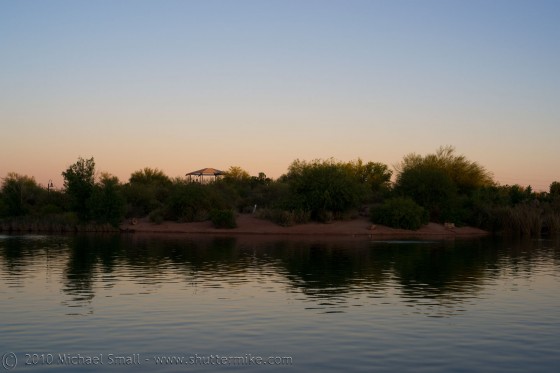
The First Shot
f/5.6 – 1/80 sec ISO 100 – Focal Length 50 mm
The Art of Non-Conformity, a blog by Chris Guillebeau dedicated to “Unconventional strategies for life, work and travel,” recently did an interview with photographer Thomas Hawk on his quest for 1 million processed photos in his lifetime. I was inspired. Thomas Hawk’s photo style and philosophy is similar to my own. I am not a portrait or wedding photographer and I shoot what I like for the love of photography. This got me to thinking about what my goal or quest is in respect to my photography. And at this point I have come up blank. But I was inspired enough by Thomas’ photography quest to take another look at my photography goals and ambitions.
What is your goal or quest with your photography?
There is not much worse than heading out to a much anticipated photography excursion only to discover that you forgot your memory card. Well, except maybe returning from that anticipated trip and realizing you forgot to reset the camera settings back to the default and shot everything at ISO 800. In either case you either end up unable to take any photographs or with a memory card full of images taken at the wrong setting that may only be fixable after hours of post-processing. I have done this enough times that I came up with a pre photo shoot photography check list to make sure I have everything in place to capture the images I am after.
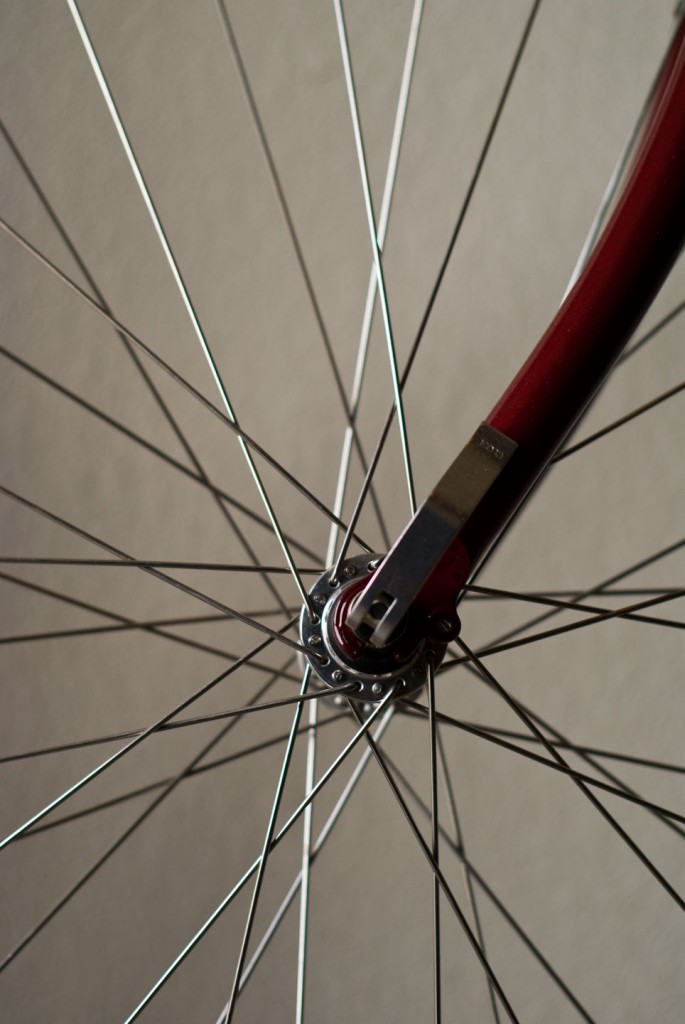 Today is day 100 of the Faded and Blurred 365 photo project. What is a 365 photo project you ask? It is rather simple in concept but a little harder to successfully carry out. It involves taking one photo a day, every day, for an entire year. And in the case of this project posting it on Flickr in the designated 365 Photo Project group. The key is not to just post one photo a day, but to post a photo taken that day. that is what makes it challenging. First you have to find the time to take the photograph. Then, the even more taxing part at times, you have to find the motivation and inspiration each day to capture an image.
Today is day 100 of the Faded and Blurred 365 photo project. What is a 365 photo project you ask? It is rather simple in concept but a little harder to successfully carry out. It involves taking one photo a day, every day, for an entire year. And in the case of this project posting it on Flickr in the designated 365 Photo Project group. The key is not to just post one photo a day, but to post a photo taken that day. that is what makes it challenging. First you have to find the time to take the photograph. Then, the even more taxing part at times, you have to find the motivation and inspiration each day to capture an image.
But it really forces you to keep your photography at the forefront of your mind every day and to keep yourself thinking about the next great shot. It makes you use your photographer’s eye and see beyond the ordinary every day. Even on those extra ordinary days. Finally it allows you to share your work and solicited feedback from a very talented pool of fellow photographers.
I have put a link to my 365 photo gallery on Flickr in the sidebar of the blog. Feel free to follow along on Flickr or even to join the group.
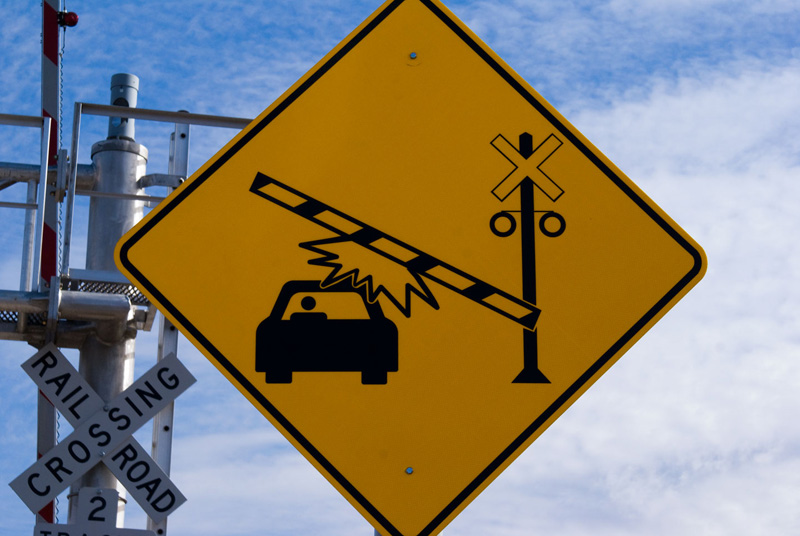
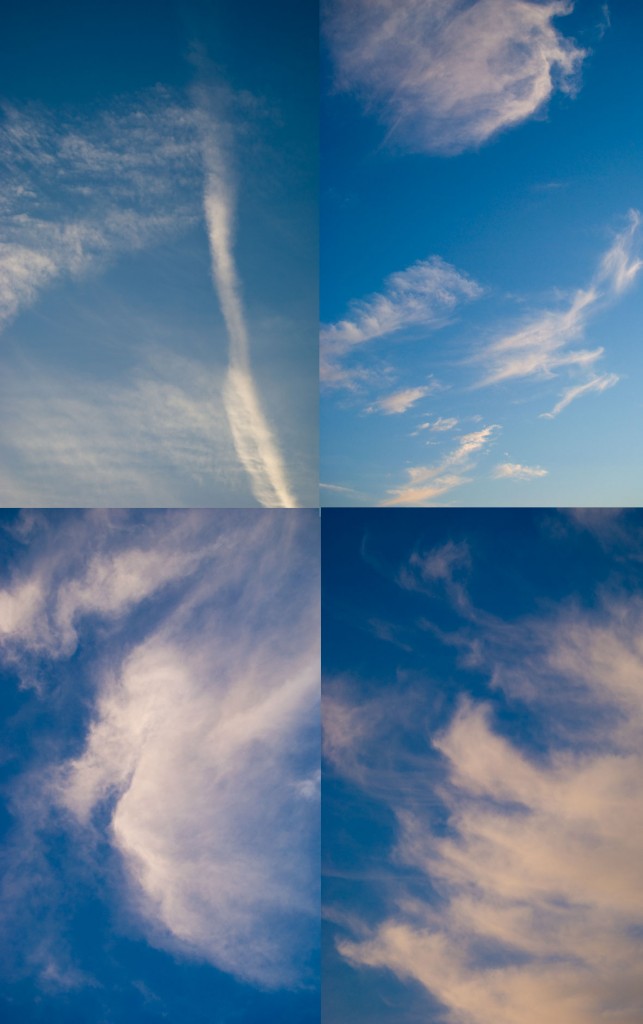

As you may have noticed, or possibly not, I updated the header image recently. My original goal was to rotate this image out more often than I actually have. I finally got around to switch the image because I was motivated by this particular photograph. I like the lighting and shadows, the muted colors, the perspective and the simplicity of the landscape.
I took a photography road trip to Southern Arizona last month with only a slight idea of where I was heading. I found the location of this image on the map and decided to see if there was anything worth photographing. There definitely was.
The image was taken in the Las Cienegas National Conservation Area near Sonoita, Arizona. This is cattle ranching and vineyard country with miles of grasslands, majestic mountain views and long stretches of empty back roads. If you get the opportunity and want to try your hand at some Arizona landscape and nature photography this is a fantastic area. It is not the better known Grand Canyon and traditional desert views Arizona is know for, but it is a hidden Arizona photographic gem.

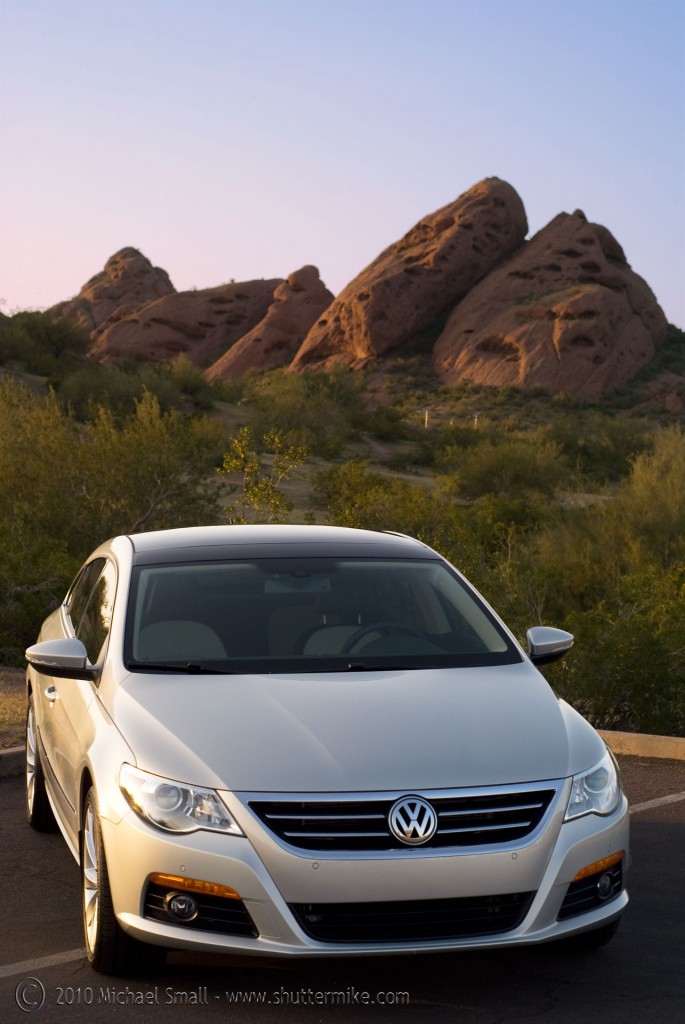 The need or opportunity to photograph a new car in any detail probably won’t come up too often. But shooting a new car can be fun and allow you to explore a subject from every angle. It is a great exercise in seeing. So should the chance come along, here are 5 tips to help you get started photographing a car.
The need or opportunity to photograph a new car in any detail probably won’t come up too often. But shooting a new car can be fun and allow you to explore a subject from every angle. It is a great exercise in seeing. So should the chance come along, here are 5 tips to help you get started photographing a car.
1) Pay Attention to the Light – Although lighting is key when shooting any subject, the lighting you use to shoot an automobile can play an exceptionally important role. With very few exceptions, a new car is very shiny. That means the wrong lighting can reek havoc on your subject. Get the lighting wrong and you can have all kinds of issues; glare, reflections, over exposed in one area and under in another, the list can go on and on. Since most of us cannot set up an indoor studio large enough to accommodate a whole car we have to resort to natural outdoor lighting. But do not fret, there is a magic solution, of sorts. You have two chances each day to find the ideal lighting situation for car photography. The magic hour , as it is known, will give you natural light without harsh shadows or overly bright highlights. This limits you to only an hour of shooting, give or take, but the end results will be well worth it.
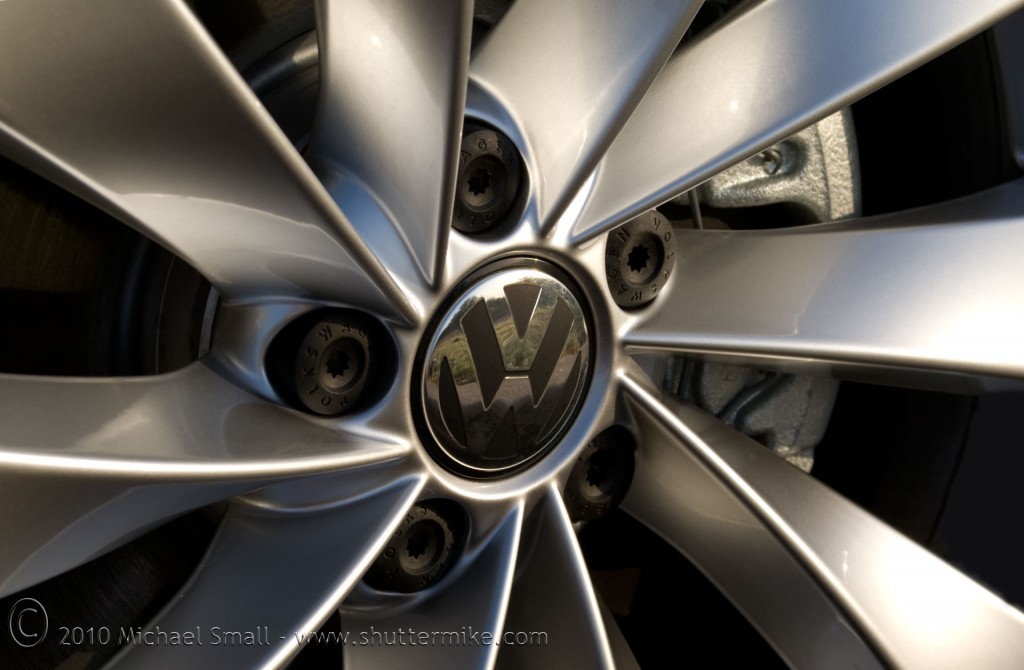 2) Explore – You will want to take the basic shots; one from all four sides. But do not stop there. Explore the car in detail as you would any subject. Get down low – even if that means laying on the ground, get up high – bring a ladder along, get up close, follow the natural lines of the car, check under the hood, in the trunk and don’t miss the interior. And don’t forget the details that make each car unique. Most cars today have some amazing lines and curves that when composed well make great images.
2) Explore – You will want to take the basic shots; one from all four sides. But do not stop there. Explore the car in detail as you would any subject. Get down low – even if that means laying on the ground, get up high – bring a ladder along, get up close, follow the natural lines of the car, check under the hood, in the trunk and don’t miss the interior. And don’t forget the details that make each car unique. Most cars today have some amazing lines and curves that when composed well make great images.
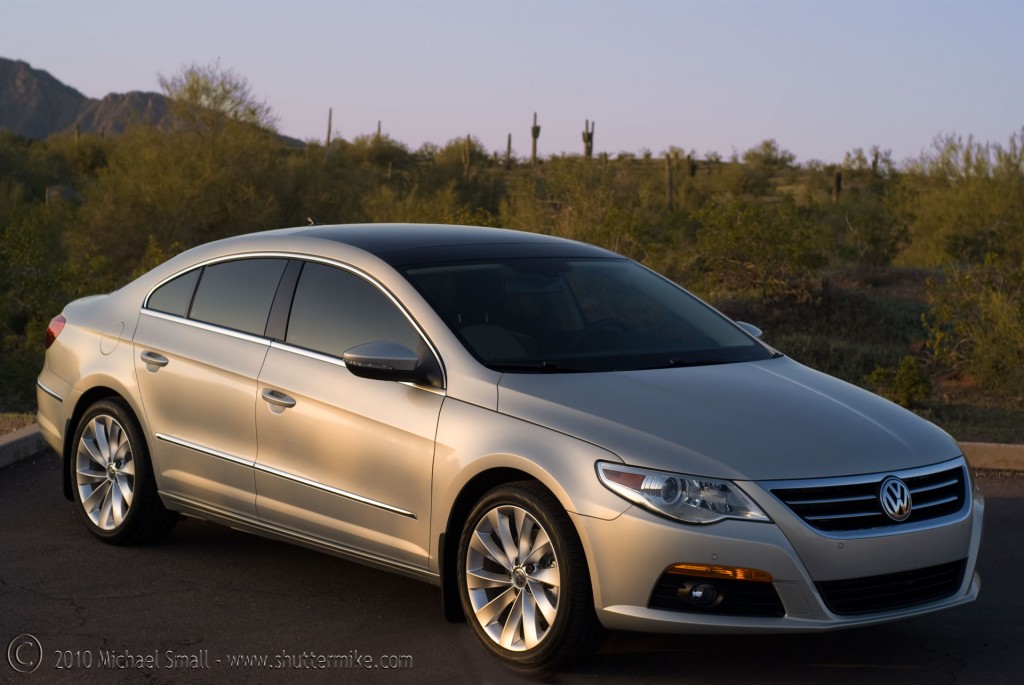 3) Don’t Let the Minor Details Ruin the Image – When shooting any subject even the most minor thing can distract from the overall image. Think of that one hair that is out of place and how it becomes the focus of a portrait. The same is true when photographing a car. Keep a sharp eye out for these minor flaws that can ruin the otherwise perfect shot such as dust, scratches, window smudges and the like. Of particular importance is reflections. Again, being a shiny object it sees all. Make sure you are not taking an unintentional self-portrait or that other objects nearby are not stealing center stage.
3) Don’t Let the Minor Details Ruin the Image – When shooting any subject even the most minor thing can distract from the overall image. Think of that one hair that is out of place and how it becomes the focus of a portrait. The same is true when photographing a car. Keep a sharp eye out for these minor flaws that can ruin the otherwise perfect shot such as dust, scratches, window smudges and the like. Of particular importance is reflections. Again, being a shiny object it sees all. Make sure you are not taking an unintentional self-portrait or that other objects nearby are not stealing center stage.
4) Chose Your Location Carefully – When 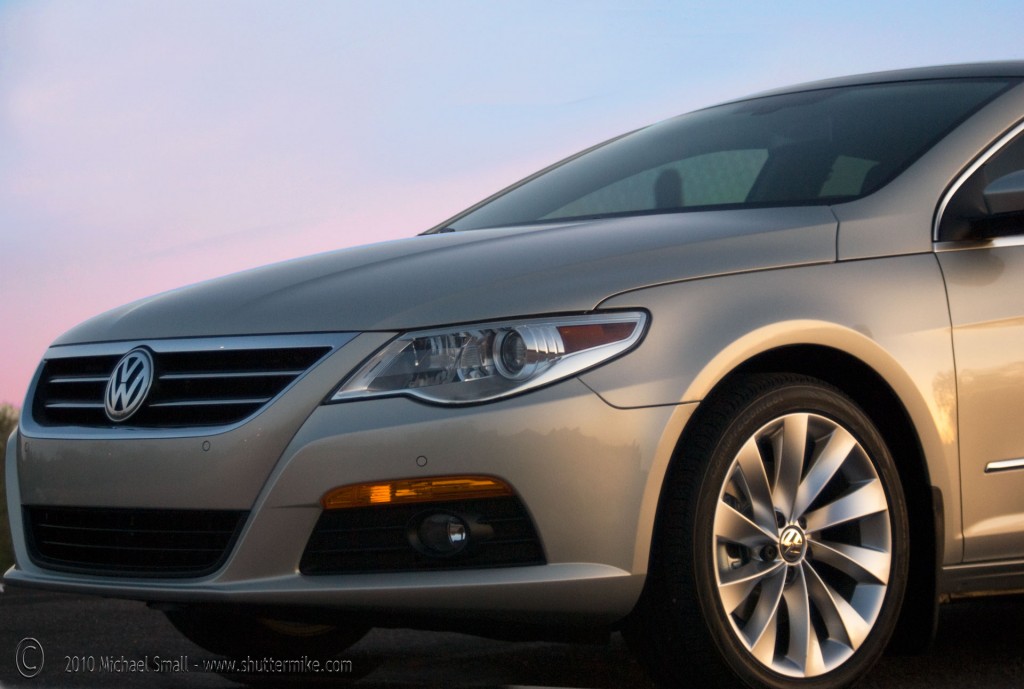 deciding where to photograph the car you want to pick a location that compliments the car and doesn’t steal all the glory. Or worse, one that is just a distraction with too much background busyness. A parking lot may seem like a natural choice for a car, but make sure it is one without 17 other cars making yours look like “just another car.” There should be no doubt that the car is the subject of the photo and not the building, people, city scape or whatever else is in the background. That having been said, an appropriate urban, rural or scenic setting can often compliment the car and help tell its story. Just keep the car as the main character.
deciding where to photograph the car you want to pick a location that compliments the car and doesn’t steal all the glory. Or worse, one that is just a distraction with too much background busyness. A parking lot may seem like a natural choice for a car, but make sure it is one without 17 other cars making yours look like “just another car.” There should be no doubt that the car is the subject of the photo and not the building, people, city scape or whatever else is in the background. That having been said, an appropriate urban, rural or scenic setting can often compliment the car and help tell its story. Just keep the car as the main character.
5) Post Processing – Post processing, editing images in a software program such as PhotoShop, can be your best friend. In case you miss one of the above tips, and it will happen, there is not much you can’t fix after the fact if your post processing skills are up to it. You obviously want to get as close to the perfect shot the first time right out of the camera. But perfection rarely happens the first time around. So when you have the perfect setting but there is a no parking sign in your shot or you overlook your own smiling face in the chrome, don’t hesitate to save the image with a little magic wand and spot healing.

 The mission statement of
The mission statement of 
 Adobe Photoshop Lightroom 2
Adobe Photoshop Lightroom 2 Batteries
Batteries

 Today is day 100 of the
Today is day 100 of the 











